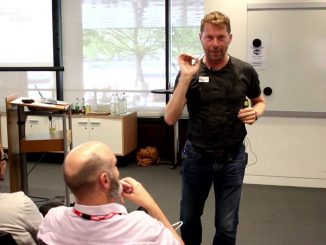Agile change and transformation
The Agnostic Agile Oath is a movement that aims at recognizing the importance of being agnostic with agility at any level. As it is stated on the web site: “one size does not fit all, one framework is not the answer, and the what’s and the how’s of what needs to be done, should be suited to customer context and to a wider strategic vision.”
If one of the first aim of Scrum was to break the silos between business analysis, development and testing, you can consider that improving the cooperation with the operation side of IT as the next frontier in this journey. What is the point to produce potentially shippable software increment in two weeks if your database administrator doesn’t want more than three new releases windows for the production database?
“Agile has become overly decorated. Let’s scrape away those decorations for a minute, and get back to the center of Agile.” The Heart of Agile is a fresh look at Agile that strips away a lot of the cruft that has built up over recent years. Collaborate, Deliver, Reflect, Improve. Alistair Cockburn goes over the addition of kokoro onto the shu-ha-ri sequence, and its implications for agile.
Resistance to change is part of the human condition and overcoming this resistance is part of adopting Agile & Scrum and changing the way delivery teams work together. A large part of the prevailing certified methods are about tackling this problem in a variety of ways. How successful these methods are depends on many things and not least the starting conditions and senior leadership support. Without this kind of safety net creativity is called for and Tony Heap talks here about his experiences with a less head on approach to influencing things.
Agile versus Waterfall is often presented as a difference in development methodology, but it is much more a clash of cultures. Large bureaucracies, government regulation and many other factors can create an environment that is hostile to many forms of innovation and in which Waterfall is actually the most cost-effective approach.
This presentation shares a set of stories, representing lessons learned from running an agile project in a waterfall-based telecom culture. What was done differently from the enterprise waterfall-based project management standard? What agile principles and specific practices were applied? What were tangible benefits to the business from the situation where one project team became “outlaws” of the corporate culture.
Making decisions in groups like Scrum teams is our daily bread. Together we ponder over the right architecture, we select tools and set rules that we should follow as a software development team. In case of errors we discuss and decide how to get rid of them once and for all. We discuss, exchange point of views, bring arguments… or even yell at each other.








